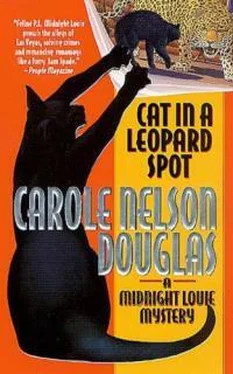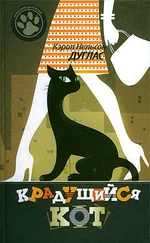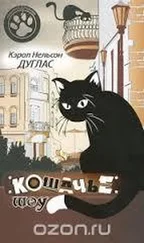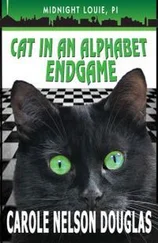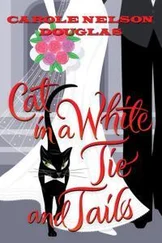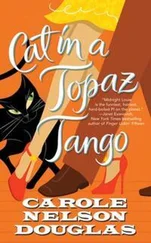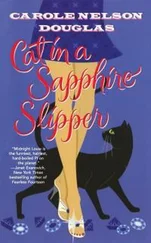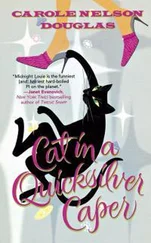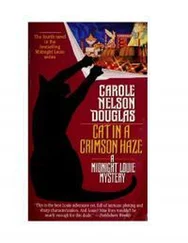Except Effinger had probably been too mean, and too dumb, to worry about a stalker as Matt did.
And Kathleen O’Connor was a lot more demonstrably dangerous than Matt ever had been.
At four-thirty Saturday night, Matt’s new old Probe joined the streams of cars heading somewhere to have fun in Las Vegas.
He headed south, away from the city, then circled back toward North Las Vegas. He watched his rearview mirror as if some hood had hidden in the backseat to hold a knife on him. A stalker was only a rear-seat hood, one car-length removed.
No vehicle seemed to stay near him long.
When he finally pulled into the old-fashioned alley behind Our Lady of Guadalupe convent, not a car was in sight. He parked in the deep shade of an ancient pine tree anyway. Pine and palm trees, only one more signpost of how schizophrenic a city Las Vegas was, an oasis in the desert, a theme-park town with a variegated bouquet of socially acceptable sin and churches of every sect known to religion.
A knock at the convent’s back door produced Sister Mary Monica, beaming like a frail apple-faced doll. She swept him into the large, spare kitchen like a prodigal son.
“How wonderful to see you!” Sister Seraphina O’Donnell just swept him into a wholehearted hug. “We know you’re so busy nowadays, but we do miss your visits.”
“Busy is no excuse,” Matt said, seeing that they had already set out the supper plates in the plain dining room with its cluster of small, separate tables. He felt like a worm for using them as a cover.
The six nuns chatted happily as they all walked to the nearby church in the warm afternoon sun. Las Vegas didn’t offer the tree-shaded streets of the Midwest, but the climate’s sun-scoured, healthy openness was always an upper. Our Lady of Guadalupe’s spire, capped with red tile, simmered in the last blaze of undiluted afternoon sunlight.
The nuns’ short black veils seemed more like linen mantillas than a last vestige of more formal habits. Matt almost felt himself transported back to the heyday of California’s Hispanic-Catholic culture. Young and middle-aged people were also converging on the old-fashioned adobe church. Their half-Latino, half-Anglo greetings and banter gave the forthcoming ritual a preface of celebration.
Matt could literally feel and see a community assembling, and for a moment he was homesick for his past at the center of so much goodwill.
But when his party passed into the shade inside the church and dipped their fingertips in the tepid holy water of the entrance fonts, when the sign of the cross replaced chatter and the only sounds in the interior stillness were the scrape of soles on floor tile and the thump of kneelers being lowered to the floor, he felt he was back a hundred years, or maybe only thirty, and about to hear a Latin mass.
Illusion, of course. The nuns led the way to a pew near the front and bracketed him in their midst. He managed to study the confessionals as they entered.
Darn! They were on both sides of the church. He’d forgotten to tell Molina which side to meet at.
The choice was simple: on one side St. Joseph ruled at the tiny side altar. On the other, Mary. There was an assignment for the amateur operative: which would Molina choose?
It was bad enough to arrange to slink into one of the unused little rooms; playing musical confessional would attract certain attention.
He glanced around as the congregation stood for the entrance of the celebrant and two altar boys…one altar boy and one altar girl, what do you know? Molina was about as tall as he was, and he didn’t spot her anywhere in this traditionally short crowd.
So even as the familiar prayers and responses of the mass settled on him like a warm, familiar blanket of sound and motion, Matt found himself fidgeting, fretting. Turning slightly to check out the pews. Studying the confessionals: three doors with a tiny arched window covered with pleated white linen.
At communion time, he was so distracted that he was mostly thinking about how he’d have such a good view of both confessionals on the way back to his seat. Then was the time to spot Molina, or make a choice. And he should also be on the lookout for Miss Kitty. It’d be just like her to show up where least expected. Imagine sliding behind one wooden door and finding her in the confessor’s seat!
Worry, Matt realized, was a great distraction from prayer, so he settled down and asked God to help him find the right confessional, please.
Not a very noble request, but all he could muster.
Someone tugged at his sleeve. He had stood automatically with everyone else for Father Hernandez’s exit. “We’ll see you back at the convent later,” Sister Seraphina whispered.
Matt nodded, kneeling again quickly and burying his face in his hands as if in private prayer. Why had he decided to go with the nuns? They had chosen a pew far too close to the altar. There was no way to turn around discreetly to figure out if everyone had left, or Molina had arrived. If she would come. Maybe something had come up, an emergency.
The church was still and growing dark except for the eternal red light near the altar, signifying the presence of the Eucharist. Maybe this meeting mocked the place and its purpose. What had he been thinking of? Desperately consulting Molina, that’s what. Kinsella was not much help. Matt needed comfort as well as aid, and Molina was the only person besides Kinsella he figured was strong enough to go near and not risk her life.
So she might aid him. Comfort? That was a foolish, reflexive need. Nobody got comfort anymore, except the dying in a hospice.
He sat on the pew and bent to lift the kneeler out of the way. The sound of it resting against the pew back ahead echoed like a single knock on a big wooden door.
Matt stood, tossed a mental coin, and opted for St. Joseph. A lot of women reared Catholic had overdosed on the Virgin Mary by age twenty. Molina would choose Joseph, because he was a missing person as far as the Scriptures went. He was a mystery and she was a cop.
Matt opened the nearest confessional door and slid in, checking the church. Utterly vacant, except for the Eucharist.
He had forgotten how dark these old confessionals were, although St. Stanislaus in Chicago had kept sinners lined up for confessionals long after the ritual, renamed and repositioned as the sacrament of reconciliation and practiced face-to-face in well-lit rooms, had become commonplace.
He felt his way to the vague white square of pleated linen, the priest’s porthole, so to speak, on the ocean of self-proclaimed sinners that would come in wave after wave on both sides of his claustrophic box. Matt had been there.
Matt knelt. This kneeler wasn’t even padded —ouch! Nothing like the Spanish for blending religion and pain. Guess sinners didn’t merit padding.
He heard a wooden panel sliding open, a soft stiletto of sound, like honing a knife. Or a razor. For a moment he imagined Kitty the Cutter lying in wait, a gray silhouette seen through a linen curtain pleated thickly.
“This is the kinkiest meet with a snitch I’ve ever had,” Molina’s voice whispered through the material instead. “I used to have to go with my grandmother to these guilt boxes when I was a very young kid. She took forever too! What took those old people so long in confession?”
Matt smiled. That one he could answer. “What children and the old confess is remarkably similar. In both cases, innumerable venial sins. Many of those old people were overscrupulous to the point of obsessive-compulsive disorder. Many priests committed sins of impatience listening to them; it was usually a double absolution in those cases.”
“Hmmm. Actually, I kind of like sitting here in the control booth. Sin Central. No women allowed.”
Читать дальше
